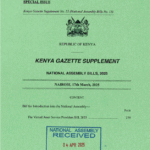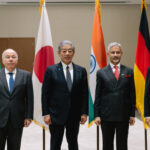Several ASEAN countries, including Thailand, Malaysia, and Indonesia, have recently expressed interest in joining the BRICS group, which currently consists of Brazil, Russia, India, China, and South Africa. This burgeoning interest highlights a significant shift in the geopolitical landscape, as these nations seek alternatives to the Western-dominated global economic and financial architecture represented by institutions like the World Bank and IMF.
One of the primary motivations for ASEAN countries to join BRICS is the desire to participate in a “south-south cooperative framework” that provides more balanced geopolitical influence compared to Western powers. By aligning with BRICS, these nations hope to access the BRICS development bank and currency reserve pool, which could help mitigate economic risks and foster financial stability.
Additionally, ASEAN countries are attracted to the BRICS vision of a more multipolar world order, offering a counterweight to the growing U.S.-China rivalry. This alignment could potentially enhance their geopolitical standing and offer new avenues for economic collaboration.
However, not all ASEAN countries share the same level of enthusiasm. Nations like the Philippines and Vietnam remain cautious, fearing excessive dependence on China’s interests within the BRICS group. Their apprehension underscores the complex dynamics at play as ASEAN countries navigate their relationships with major global powers.
The expansion of BRICS to include new members from the Global South, such as Saudi Arabia, Iran, and the UAE, is largely seen as a move driven by China to increase its global influence. This push for expansion reflects the broader strategy of BRICS to diversify its membership and strengthen its global clout.
Overall, the growing interest in BRICS among ASEAN countries reflects the region’s desire for more diverse global partnerships and a reduced reliance on Western-led institutions. While concerns about China’s dominance persist, the allure of BRICS signifies a notable shift in the global economic and geopolitical order.
Background on ASEAN Countries
The Association of Southeast Asian Nations (ASEAN) is a regional intergovernmental organization comprising ten Southeast Asian countries. Established on August 8, 1967, in Bangkok, Thailand, by Indonesia, Malaysia, the Philippines, Singapore, and Thailand, the group has since expanded to include Brunei, Vietnam, Laos, Myanmar, and Cambodia. ASEAN aims to promote political and economic cooperation and regional stability among its members. Here is a brief overview of each member country:
Indonesia: As the largest country in Southeast Asia by both population and land area, Indonesia plays a significant role in the region. The capital city, Jakarta, is a bustling metropolis that serves as the political and economic hub. With a population of approximately 273 million, Indonesia boasts a diverse cultural landscape and is known for its rich natural resources, including oil, gas, and minerals. The economy is driven by a combination of agriculture, manufacturing, and services, making it the largest economy in Southeast Asia.
Malaysia: Malaysia is renowned for its economic diversity, with key sectors including electronics, automotive, and petroleum industries. The capital, Kuala Lumpur, is a modern city known for its impressive skyline dominated by the Petronas Twin Towers. With a population of about 32 million, Malaysia’s strategic location along the Strait of Malacca makes it a vital trade and maritime hub. The country’s economy benefits from a mix of high-tech industries and resource-based sectors, fostering a balanced and robust economic environment.
The Philippines: The Philippines, with its capital Manila, is an archipelago comprising over 7,000 islands. It has a population of approximately 108 million people. The economy is driven by a mix of agriculture, manufacturing, and services, with a significant portion of GDP coming from remittances sent by Overseas Filipino Workers (OFWs). Known for its vibrant culture and rich history, the Philippines is also a popular tourist destination due to its beautiful beaches and diverse marine life.
Singapore: Singapore is a highly developed city-state with a strong global presence in finance, trade, and technology. With a population of about 5.7 million, it is known for its efficient government, high standard of living, and robust economy. Singapore’s strategic location has made it one of the busiest ports in the world. Its economy is characterized by a highly developed and free-market system, with significant contributions from financial services, manufacturing, and tourism.
ALSO READ: Turkey becomes the latest country aiming to join the BRICS+ group
Thailand: Thailand, known for its tourism, vibrant culture, and culinary delights, has a population of around 69 million. The capital city, Bangkok, is a bustling center of commerce and tourism. The economy is diverse, with key sectors including agriculture, manufacturing, and services. Thailand is one of the world’s largest producers of rice and has a significant automotive industry, making it a critical player in regional and global trade.
Brunei: Brunei is a small but wealthy nation on the island of Borneo, with a population of about 440,000. The economy is heavily reliant on oil and gas exports, which have provided substantial wealth for the country. The capital, Bandar Seri Begawan, is known for its opulent Sultan’s palace and well-preserved natural beauty. Brunei’s small population and vast resources contribute to a high standard of living.
Vietnam: Vietnam, with its capital Hanoi, has a population of approximately 97 million. It has experienced rapid economic growth over the past few decades, transforming from an agrarian economy to one driven by manufacturing, services, and technology. Key exports include textiles, electronics, and agricultural products. Vietnam’s rich history and cultural heritage, coupled with its natural landscapes, make it a significant cultural and economic force in Southeast Asia.
Laos: Laos is a landlocked country with a population of around 7 million. The capital city, Vientiane, is known for its French colonial architecture and Buddhist temples. The economy is primarily based on agriculture, hydroelectric power, and mining. Despite being one of the least developed ASEAN countries, Laos has been working towards sustainable development and economic growth, focusing on its natural resources and strategic location within the region.
Myanmar: Myanmar, also known as Burma, has a population of about 54 million. The capital city is Naypyidaw, though the largest city and commercial center is Yangon. The economy is diverse, with key sectors including agriculture, mining, and energy. Myanmar has rich cultural traditions and is known for its historical sites and diverse ethnic groups. Political and economic reforms in recent years have aimed to integrate Myanmar more fully into the regional and global economy.
Cambodia: Cambodia, with its capital Phnom Penh, has a population of approximately 16 million. The economy is primarily driven by agriculture, garment manufacturing, and tourism. The country is known for its ancient temples, particularly Angkor Wat, a UNESCO World Heritage site. Despite facing challenges such as poverty and political instability, Cambodia has seen significant economic growth and development in recent years.
ASEAN countries collectively represent a dynamic and diverse region with significant economic, cultural, and political influence. The organization’s efforts to promote regional stability, economic integration, and cultural exchange continue to play a crucial role in shaping the future of Southeast Asia.
ALSO READ: Malaysia to officially seek BRICS membership













